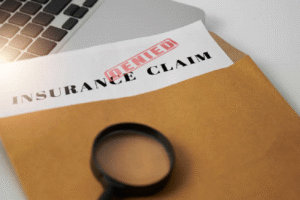Buying home insurance is one of those things most of us know we need—but few take the time to fully understand. And that’s risky. Because not all home insurance policies are created equal, and if you’re not careful, you could discover your coverage has gaps only after disaster strikes.
Imagine this: you suffer damage from a burst pipe or theft, you file a claim expecting help, but your insurance only covers part of the loss—or worse, excludes it entirely. That’s a nightmare no homeowner wants to face.
So how do you make sure your home insurance policy truly protects your home, your belongings, and your peace of mind? Let’s break it down step-by-step and help you get the right coverage for your unique situation—before you need it.
Why Do Home Insurance Gaps Happen?
First, let’s clear up why many homeowners end up underinsured or uncovered when it matters most.
Home insurance policies have limits and exclusions for a reason—they can’t cover absolutely everything. Over time, your home’s value changes, you accumulate new belongings, and risks evolve. Without regular check-ins and updates, your policy may fall behind reality.
Common pitfalls include:
-
Outdated home valuations: Your insurer might still be working off a 10-year-old estimate of your home’s rebuild cost.
-
Uncovered perils: Floods, earthquakes, sewer backups, and other specific risks often aren’t included in a standard policy.
-
Personal property limits: Your policy might only cover a portion of the true value of your furniture, jewelry, or electronics.
-
High deductibles or low liability limits: Leaving you exposed to unexpected expenses or lawsuits.
The good news? With a little effort, you can avoid these traps.

1. Understand Exactly What Your Policy Covers—and What It Doesn’t
Standard home insurance policies generally cover:
-
Dwelling coverage: Protects the physical structure of your home from perils like fire, wind, hail, or theft.
-
Personal property: Covers belongings such as furniture, clothes, and electronics—up to a specified limit.
-
Liability protection: If someone gets hurt on your property or you cause damage to someone else, liability insurance covers legal and medical costs.
-
Additional living expenses: If your home becomes uninhabitable due to a covered loss, this helps with hotel bills, meals, and other temporary costs.
But watch out—most policies exclude:
-
Damage caused by floods, earthquakes, or landslides (you’ll need separate policies for these)
-
Wear and tear, maintenance issues, or gradual damage like mold or termite infestations
-
High-value items beyond your personal property limits unless you add endorsements
The key here is to read your policy carefully. If anything is unclear, ask your agent to explain it in plain language. Know exactly what protection you have and what you don’t.
2. Update Your Coverage When You Make Changes to Your Home or Lifestyle
Life changes, and so should your insurance.
Did you renovate your kitchen with high-end appliances? Add a new deck? Finish your basement? Or maybe you bought a pricey TV or started a home business?
All these can increase your home’s replacement cost or the value of your possessions. If you don’t tell your insurer, your policy might not cover the full amount if disaster strikes.
Tip: Set a reminder to review your coverage after any home improvement or major purchase. Your insurer can adjust your limits accordingly—often for a small premium increase that’s worth the peace of mind.
3. Take Inventory of Your Personal Belongings
One of the most overlooked steps is creating a home inventory.
Why? Because insurance companies pay claims based on the value of your belongings. If you don’t have a clear list of what you own, you might underestimate the amount of personal property coverage you need.
Start by walking through each room and noting down major items: furniture, electronics, jewelry, art, appliances, and even clothing collections. Take photos or videos and keep receipts when possible. There are also apps designed specifically for home inventories to make this process easier.
Having this information ready can speed up claims and ensure you get a fair payout if something gets stolen or damaged.
4. Know Your Policy Limits and Deductibles—and Choose Wisely
Your policy limit is the maximum your insurer will pay on a claim. If you have a $300,000 dwelling coverage limit but rebuilding your home costs $400,000, you’ll have to cover the difference.
A deductible is the amount you pay out-of-pocket before insurance covers the rest. Higher deductibles usually mean lower premiums but more upfront cost if you file a claim.
Balancing act: Pick coverage limits that reflect your home’s true replacement cost, and choose a deductible you can comfortably afford. Don’t be tempted to skimp on coverage just to save a few dollars—this can backfire badly.

5. Consider Add-Ons and Endorsements for Extra Protection
If you have special needs or valuable possessions, standard policies might fall short. Here are some common add-ons worth considering:
-
Jewelry, fine art, collectibles: These often have coverage caps under regular policies. Scheduling them separately ensures full protection.
-
Water backup or sewer damage: Sewer backups aren’t typically covered but can cause costly damage.
-
Home business equipment: If you run a business from home, your personal policy might not cover equipment or liability.
-
Identity theft protection: Some insurers offer coverage or support services if your identity is compromised.
Talk with your agent about what fits your lifestyle and property. These add-ons can prevent nasty surprises later.
6. Don’t Forget Liability Coverage—It’s More Important Than You Think
Liability protection guards you against lawsuits if someone slips on your icy driveway or your dog bites a visitor. It can cover legal fees, medical bills, and settlements.
If you frequently host guests, have a pool, trampoline, or pets, consider higher liability limits for extra peace of mind. Lawsuits can be expensive, and having robust liability insurance shields your finances.
Bonus Tip: Review Your Policy Annually and When Life Changes
Your home insurance isn’t “set it and forget it.” Life happens—families grow, renovations happen, and values change. A yearly policy review with your agent ensures you’re not caught off guard by gaps or outdated coverage.
Final Thoughts: Don’t Wait Until It’s Too Late
Home insurance is there to protect one of your biggest investments. But that protection only works if your policy truly reflects your needs.
By understanding what your policy covers, keeping it updated, and tailoring it to your home and belongings, you’ll have confidence that when disaster strikes, you won’t be left paying the bill.
Take action now: review your insurance, make a detailed inventory, and chat with a trusted agent. Your future self will thank you.





